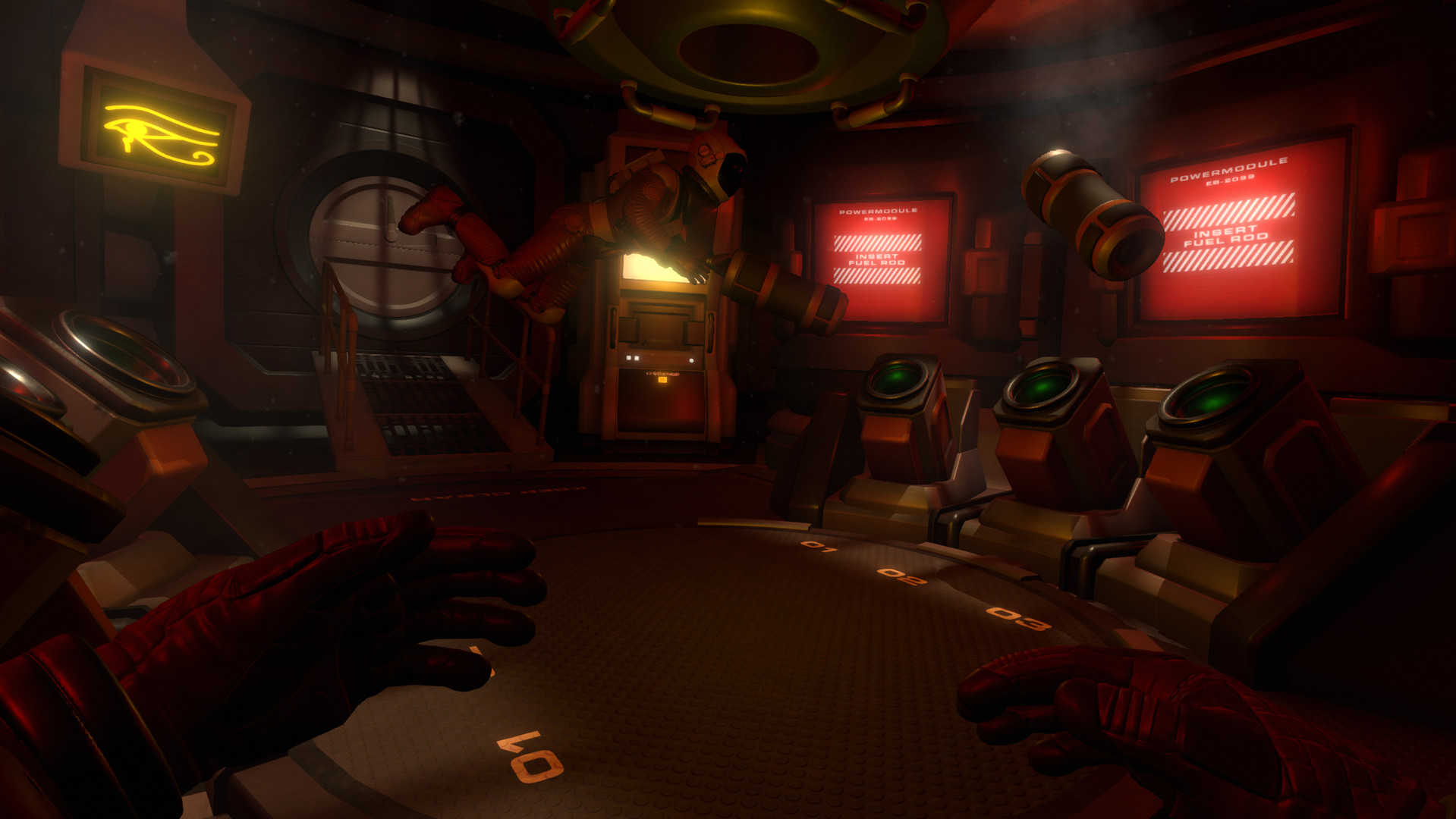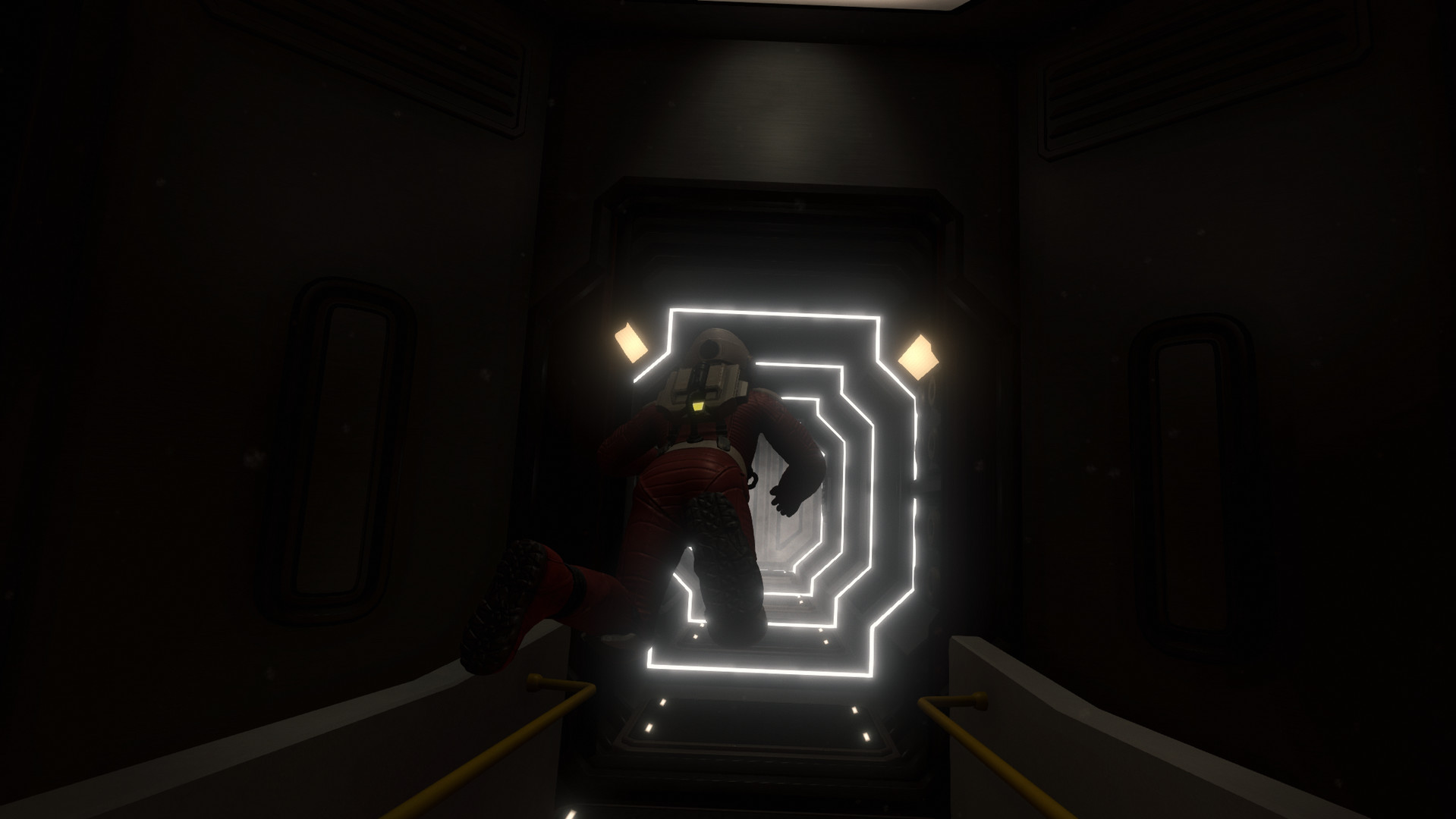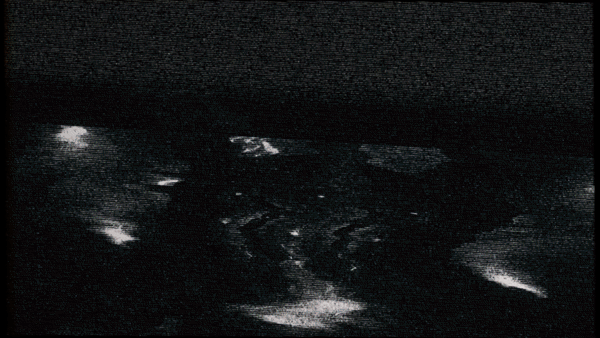Let’s get this out of the way first: Downward Spiral: Horus Station is not a rip-off of Lone Echo. Yes, the zero gravity traversal is strikingly similar to Ready at Dawn’s Oculus exclusive but we actually saw it first in Downward Spiral: Prologue, which released a little over a year ago now. More than that, though, 3rd Eye Studios’ brilliant new sci-fi game is less interested with the blockbuster thrills of its contemporary, instead in pursuit of a different kind of space odyssey.
The entire four-hour campaign comes and goes without a single spoken word, for example, leaving you to piece together the story of a survivor exploring the wreckage of a space station. The void is filled by a mesmerizing soundtrack that lures you along each deserted corridor and barren control station, effortlessly switching from swathy mystery and intrigue to rhythm-setting action pieces when the time arises. Then there’s that combat, which somehow finds a natural fit in an otherwise atmospheric exploration game.
Add to that full co-op support and a competitive multiplayer mode to boot and Horus Station is quite the package.
Much of your time onboard Horus Station is going to be spent throwing yourself out into the zero gravity open, catching yourself on the closest wall, realigning and then doing it all over again. Even after hours of Echo Arena and the like, this remains one of the most convincing and outright enjoyable means of getting around in VR, which is fortunate considering there are lengthy sections of the game where it’s all you’re doing. Just getting from A to B is an enjoyable game in its own right here, though 3rd Eye does lean a little too hard on the mechanic at times. Some of the eight acts feel like they come and go without much of anything happening, even if you are rigorously hunting down plot points in the game’s environment.
It’s a testament to the intrigue that 3rd Eye drums up that I never found myself getting bored, though. Every new area I entered felt like a discovery worthy of inspection, be it wondering how the poor soul floating in the middle of the room met his end, or catching a rare glimpse of the ominous orange planet that Horus Station orbits around. I was constantly curious as to what I’d find behind each and every one of the facility’s enormous doors, as if the answers left by the harrowing pile of corpses I was wading through were always right around the corner. They’re often not; this is a story that will only stretch as far as your imagination lets it, but the powerful atmosphere drags you through all the same.
Horus Station clearly fancies itself as the 2001: A Space Odyssey to Lone Echo’s Gravity, and it comes admirably close to pulling it off. At times the game’s intermittent visions from the planet below sent chills down my spine as the hazy soundtrack hypnotized me. Crucially, there’s very little that ever takes you out of the experience; from the convincing locomotion to the accessible UI (more on that in a bit), the game remains powerfully immersive throughout.
The ambiguity of the plot, meanwhile, had me enraptured in what was happening right the way through, even if 3rd Eye ultimately doesn’t drop enough breadcrumbs for you to pick apart. There aren’t any Gone Home-style notes to flesh out the world or audio diaries to listen in on. It’s a deliberate decision, but it can feel somewhat aimless, too. At times it probably strays a little too close to imitation, especially of something that’s mimicked far too often, but catching even a slither of that movie magic makes Horus Station worth seeing.

Just when your patience begins to wear thin, Horus Station does what it does best, it evolves. There’s a constant stream of new tools and weapons waiting for you as you make your way through the facility. A grappling hook gives you a bit more of a say in locomotion, for example, before you find a handheld thruster that makes movement significantly easier.
It’s the weapons that really standout, though. Taking a page from the book of Dead Space, many are re-purposed tools: nail guns make for meaty if unwieldy starting options, while a wrench lets you freely swing it around like Gordon Freeman in a space suit. Even the guns with obvious shortcomings are a joy to use and make for fun shootouts with the game’s drone-like enemies. You’ll often find it best to hold onto some cover and then use your arm to swing in and out of view, trading shots with robots that will kill you with just a few hits even on the normal difficulty.
Horus Station does occasionally struggle with finding the balance in challenge, though. When you die, you’ll simply warp back to the nearest spawn point with the enemies you already killed staying that way. Though it definitely helps fight off some of the frustration that still arises when you’re quickly flanked and disposed of, it can also rob the action of some of its intensity. It allows for more clumsy, carefree play that can’t disguise design that doesn’t quite know how to adapt to this more open style of combat. Enemies are fully aware they can rush you and come out on top, but the remedy shouldn’t be to simply embrace death.

If anything, I’d have liked to see the game go further with its already-intuitive UI, which leaves your entire inventory within arms-reach. Despite its refreshing ease of use, you can only equip one item in a hand at a time and the game doesn’t pause as you select a new tool. Get caught in mid-air without a shotgun in-hand and you’re guaranteed to be on your way back to a spawn point.
Still, as with items, enemy types are constantly arriving in new shapes and sizes. At times I was swatting smaller robots away like bothersome flies as I took long-range pot shots at missile-spouting orbs on the other side of an enormous room. In these moments the combat is a multitasking delight, even if it’s easy to spot some holes like enemies appearing out of thin air to get the drop on you.
Multiplayer, meanwhile, feels like something of an afterthought to an expertly-crafted campaign, that it uses the scraps of your adventure to piece together entertaining competitive modes. It’s fun to throw yourself around zero-gravity arenas and dodge bullets, but it can’t shake the feeling of someone messing about in a swimming pool after they’ve done their serious exercise for the day.

There are issues with each of Downward Spiral: Horus Station’s core elements, but the game’s hugely compelling atmosphere, ever-evolving arsenal and first-rate immersion is more than enough to see you through to the end. From the chilling exploration to the nimble combat, this is an adventure that keeps its hooks in you and occasionally even pulls off that rarest of sensations: to make you forget where you really are in the world. 3rd Eye Studios has crafted a space odyssey to call its own, and it makes for one of 2018’s best VR games yet.
Read our Content Review Guidelines for more information on how we arrived at this score.

























